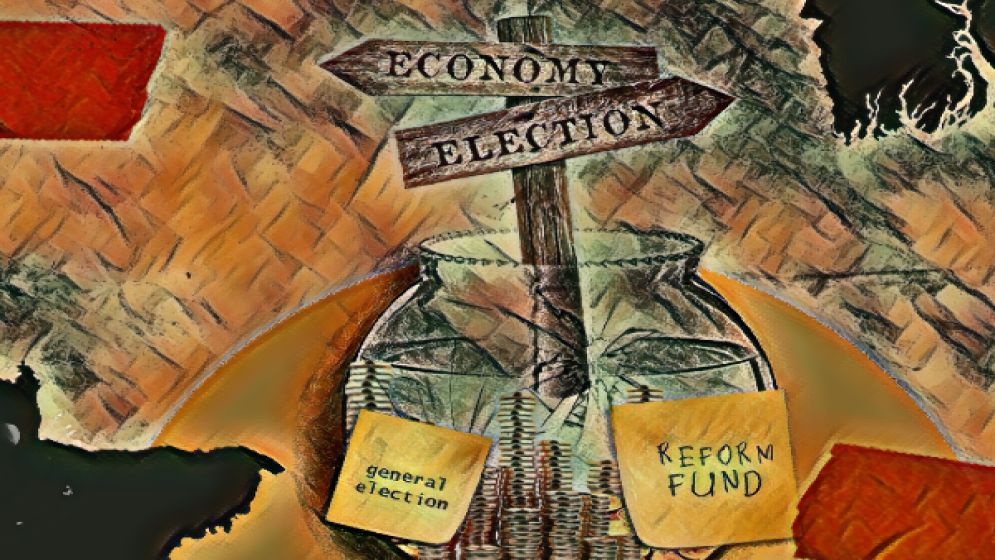The emerging political landscape: Who are the main players and how are they maneuvering?

It's been a month since the parliament, elected on January 7, was dissolved. According to the constitution, a new parliament should be elected by November 4. However, it is highly unlikely that this will occur.
The interim administration has pledged to fulfill the people's aspirations for constitutional and institutional reforms, as articulated through the Monsoon Revolution.
In practice, this likely means the administration will work to broker an agreement among key political parties on reforms to be implemented by the future elected parliament. The specifics are still being worked out, and it's too early to predict the outcome.
Nevertheless, it’s valuable to assess the current and evolving political landscape. This article aims to do just that, albeit from a subjective perspective.
-66dfe07ceb3c6.png)
The BNP’s resurgence
It's only fitting to start with the Bangladesh Nationalist Party. Defying numerous predictions of its demise over its 46-year history, the BNP is now widely seen as the next government in waiting. Yet, its ascent to power is neither assured nor straightforward.
On the one hand, as the largest political party, it should theoretically win any election. However, this very expectation is also creating challenges.
As in many developing (and even developed) countries, local politics is largely about patronage and influence. The sudden power vacuum left by the hypothetical fall of the Hasina regime is being filled by the BNP at the grassroots level.
Often dismissed as mere 'dakhal' by the national elite, the changes in thousands of committees,societies, and associations managing markets, mosques, transport hubs, etc., across the country, reflect the true dynamics of Bangladeshi society.
Despite these advantages, the party's image is undeniably tarnished by violent clashes between different factions vying for control of the patronage network in semi-urban areas.
The BNP leadership—a de facto triumvirate of Tarique Rahman,Mirza Fakhrul Islam Alamgir, and Amir Khasru Mahmud Chowdhury—appears to recognize this problem. They've demanded explanations from senior leaders, expelled several members, and even handed some individuals over to the police.
Simultaneously, the BNP has formally proposed a few constitutional reforms, including an upper house in the legislature and term limits.
Crucially, knowing they can trigger an election anytime, they seem to be in no rush. They're prioritizing regrouping, recruiting, and preparing for the return of their exiled acting chairperson.
-66dfdfe5e7065.png)
Jamaat’s overdrive
In contrast to the BNP's cautious strategy, Jamaat-e-Islami and other Islamist groups seem to be counting their chickens before they hatch.
Whether it's the army chief mentioning Jamaat and Hefazot leaders in his August 5th press conference, the constant Indian propaganda about an Islamist takeover of Bangladesh, or the visible increase in religious practices and symbols in the country - there's a widespread belief among intellectuals and experts that Islamists are on the verge of significant electoral gains.
Two arguments are typically offered to support this view.
Firstly, Islamists were severely repressed under the Hasina regime, thus garnering sympathy.
Secondly, having never been in power, there's a sense of "let's give them a chance," which contrasts sharply with the BNP, whose past record in power is open to criticism.
However, there are reasons to be skeptical about the Islamists' political strength. Firstly, amidst calls for constitutional and institutional reforms, Islamists have offered little beyond old culture war tropes about the national anthem and possibly the flag.
These issues might not resonate as strongly with the general public as they do in some corners of social media.Even within Islamist circles, there's far more agreement on what they oppose than on what they stand for.
While Jamaat has been attempting to build a broad alliance of Islamist parties, their chances of success should be viewed in light of the fact that the last time various religious leaders of the subcontinent united for a political cause was during the 1857 war of independence against the British East India Company.
Islamist groups in the subcontinent are highly factionalized, preoccupied with sectarian and theological disputes. Can they sustain a political alliance in Bangladesh to achieve significant success in the next election?
Moreover, Islamism as a global movement is largely a thing of the past. The inability of Islamist parties to successfully govern any major country through democratic means undermines the slogan "Islam is the solution."
In Turkey, a moderately Islamist party has transformed into an authoritarian regime over the last two decades. Since the Arab Spring, Islamists haven't been able to govern anywhere effectively.
And in the democracies of monsoon Asia, they remain nothing more than a large minority party — a role Jamaat played in Bangladesh when we had elections. Given this global trend,I'm highly skeptical that Bangladeshi Islamists will make significant electoral gains.
-66dfe006ce100.png)
Awami League and the equation of
votes
If the prospects for the Islamists are potentially overstated, the future prospects of the Awami League might be understated.
It's easy to write off the Awami League as a relic of the past. Over the last decade, the party’s organization has deteriorated as Hasina relied on the brute force of law enforcement and a politicized judiciary to govern through censorship, torture, abduction, and murder.
Now that she has fled, it seems challenging for the party to recover.
Indeed, if an election were held today, it would likely be difficult for the Awami League to mount a significant campaign beyond its core constituencies. However, will this still be the case a year from now?
Let's examine some figures.
In the 1979 election, the Awami League secured about a quarter of the votes. Could this be the party's minimum threshold? Even if the party cannot organize or campaign under its own name or symbol, these voters represent a substantial constituency. There's nothing to prevent individuals from running as independents to appeal to these voters.
For Jamaat, their highest electoral performance was 12 percent in 1991. Even if they manage a remarkable feat and maintain an Islamist alliance, could they surpass this by much? It seems likely that a quarter of the votes might be their upper limit.
These voters are likely to be concentrated in specific regions: for the Awami League (or whatever name their candidates run under), this means rural areas in south Bengal and greater Sylhet; for Jamaat (and its Islamist allies), it means North Bengal and parts of Chittagong.
What about the remaining half of the electorate, spread across the rest of the country?
The BNP has consistently garnered between 30 and 40 percent of the vote in parliamentary elections (with Ziaur Rahman and Abdus Sattar receiving much higher support in presidential elections).
Given that both the Awami League and Islamist votes are regionally concentrated, while the BNP has a nationwide organization and support base, the BNP could potentially secure a decisive majority with just a third of the votes — and this might even underestimate their actual support.
-66dfe02413530.png)
Young revolutionaries–a third force?
Ah, but what about the young revolutionaries?
They are indeed the wildcard. While the BNP, Islamists, leftist groups, civil society activists, and dissidents resisted Hasina's autocracy over the past 15 years, the regime ultimately fell due to a youth-driven upheaval. Given this, it's natural to expect that these young activists will leverage their political skills and evolve into a political party, and the indications are that they will.
Among the coordinators, there are individuals with notable political insight, organizational prowess, and both local and national recognition. They also possess a compelling political narrative stemming from the Monsoon Revolution. Successful political parties have been built on far less!
Nevertheless, they face two significant challenges.
First, electoral politics is highly localized. With 300 seats, each requiring hundreds of polling centers, and needing numerous foot soldiers to win each seat, the logistics of setting up a party are indeed daunting. This is a key reason why all previous 'third party' efforts, from Kamal Hossain in the early 1990s to Reza Kibria and Nurul Haq in recent years, have failed.
Having a charismatic leader could help alleviate this challenge to some extent. However, the Monsoon Revolution lacked such a figure—a rare occurrence in our history!
However, one can imagine “murubbi”-- figures like Pinaki Bhattacharya, Mahmudur Rahman and Asif Nazrul providing a sort of brand power in a scenario where various young revolutionaries are raising their profile in the administration during the interim period while others are organizing the new party.
If they can pull it off, such a party will cover the same ideological space of moderation and capable governance that is BNP’s natural forte.
That could make for a very exciting political landscape.
However, achieving this outcome would require a series of developments. As of one month after the revolution, the most likely scenario seems to be a BNP landslide majority.
It’s difficult to envision anyone possessing Hasina’s exact personality traits, so concerns about such a majority turning into autocracy may be less pressing. However, in Bangladesh, absolute power often leads to severe irresponsibility.
As James Madison famously said, institutions should be designed with the assumption that the worst possible leaders will be in charge, since rules are unnecessary if angels were in power.
This is why it’s crucial to reach a broad agreement on constitutional and institutional reforms before holding elections.
—-
This article was previously published in Nuraldeen. It is republished in Bangla Outlook with stylistic edits and the author’s permission.

